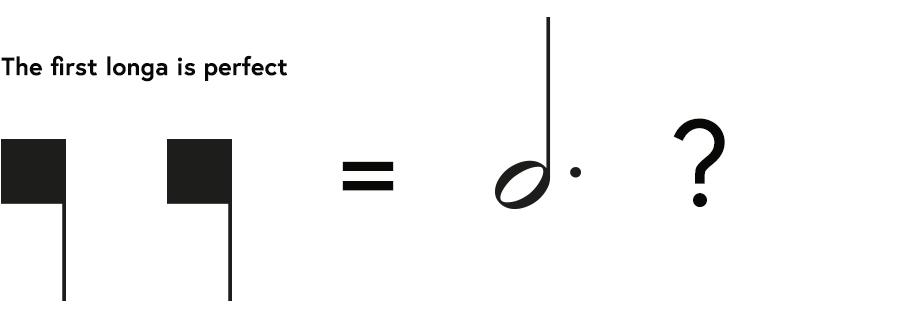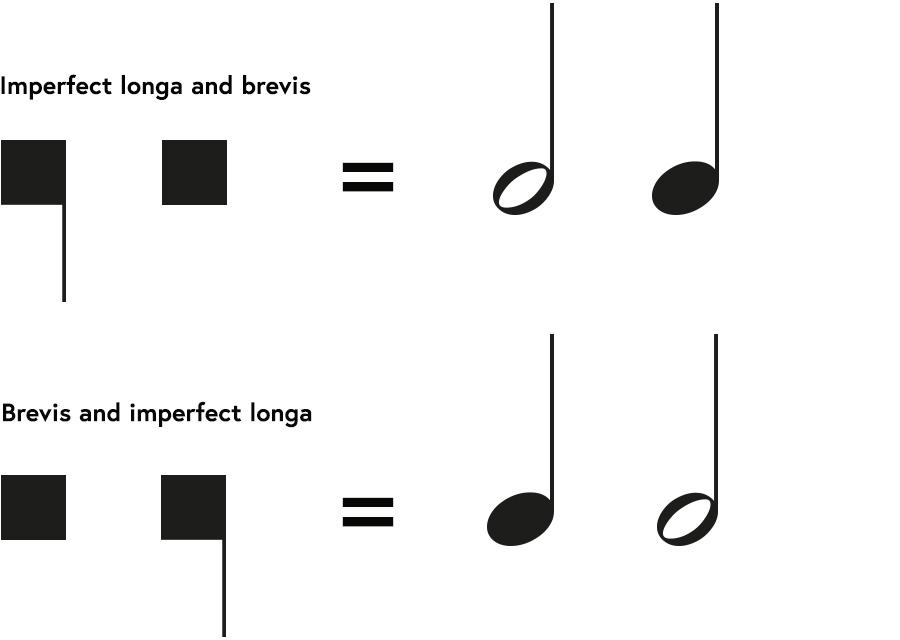EARLY MENSURAL NOTATION
4.4
Perfection, imperfection and alteration: mensural rules I
Early mensural notation is based on the very idea of perfection. In medieval mensural music perfection (perfectio) is a threefold temporal unit that structures the succession of longae and breves.
In the music theory around 1270 we find the following explanation in a text that is attributed to Magister Lambertus: ‘It should be considered that the imperfect [longa] does not know how to be made except through the following or preceding breve, because the longa and the brevis [together] (and vice versa) always make one perfection.’ (Lambertus, Ars musica, 71)
In the late 13th century the notion of perfection is meant to be the basic rhythmical unit of musical composition: Therefore, Magister Lambertus concludes: ‘If anyone asks whether a mode or a natural song can be made from all imperfect longae – just as it can be made from all perfect longae – the response (with a proof) is: no.’ (Lambertus, Ars musica, 71)
Perfection–imperfection–alteration
The temporal unit of a perfection can be formed by a single perfect longa (consisting of three breves) or even by a combination of a longa and a brevis or by a combination of a brevis and a longa. In the last two cases the longa becomes imperfect, or – as we say – is imperfected by the following or by the preceding brevis. In that case the longa consists of two breves. Of course a perfection does exist also every time a unit of three breves is constituted as for example by three breves, or by six semi-breves or by two semi-breves and two breves and so on.
How can we recognise if a longa is perfect or imperfect in the notational practice? We should keep in mind that the temporal duration always depends on the context. Therefore if a longa stays alone, we are not able to determine if it is perfect or imperfect (except when it stays at the end of a composition).
Mensuration rules for single notes:
1. A longa remains perfect if it is followed by another longa. ’Similis ante similem perfecta’: a note is perfect before another one of the same kind.

However, if there is no further note following the second longa, we cannot determine if it is perfect of imperfect.
2. A longa is imperfected by a following or by preceding brevis. In the first case we say it becomes imperfect a parte post; in the second a parte ante.

If both forms of imperfection are possible, the imperfection a parte post takes preference.
3. A longa remains also perfect if it is followed (or preceded) by two or three brevis.

4. This last rule defines the relationship between the breves. When there are just two breves between two longae and we know, that the unity of three breves (perfectio) must be fulfilled, the second brevis will be altered: its value will be doubled.

In that case the first brevis will be called recta (proper), the second altera (changed).
References
The ‘Ars musica’ Attributed to Magister Lambertus/Aristoteles, ed. by Christian Meyer and transl. by Karen Desmond, Burlington 2015.
License
Copyright: University of Basel
